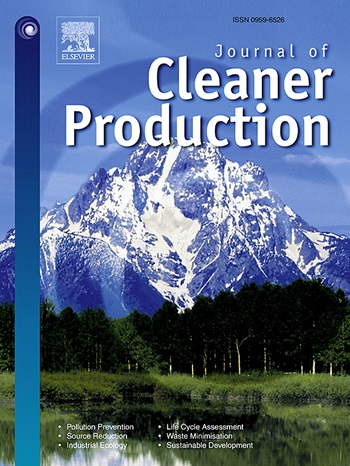Bismuth-selenium nanocomposite clusters inhibit tobacco bacterial wilt by disrupting bacterial morphology and promoting vegetative oxidative phosphorylation
IF 9.7
1区 环境科学与生态学
Q1 ENGINEERING, ENVIRONMENTAL
引用次数: 0
Abstract
Tobacco bacterial wilt significantly impacts tobacco yield and quality, despite traditional control methods such as chemical fungicides and resistant cultivar breeding. However, these approaches suffer from limitations including monotonousness, residue concerns, and lengthy breeding cycles. In search of alternative solutions, nanomaterials have emerged as promising agents for enhancing agricultural productivity. Bismuth (Bi), a stable metal element with potent antibacterial properties, can effectively inhibit bacterial infections. Selenium (Se), an essential trace element for plants, exists in organic forms like selenocysteine within plants and enhances stress resistance. In this study, we designed cluster-like Bi-Se nanoparticles (Bi-Se NPs) by combining lamellar Bi NPs and spherical Se NPs via electrostatic interaction under nitrogen protection using a redox method. The optimal dosage was determined to be 128 ± 5 μg/mL based on antibacterial inhibition tests. Application of Bi-Se NPs through root irrigation increased selenium and reducing sugar contents in tobacco leaves, indicating a substantial nutrient boost in the plant body. Multi-omics analysis of the leaves revealed significant upregulation of succinic acid and flavin mononucleotide (FMN), components of the oxidative phosphorylation pathway. This upregulation enhanced pathway efficiency, accelerated oxygen and ATP production in leaves, and notably improved metabolic efficiency, thereby fostering tobacco growth and development. Furthermore, toxicity evaluations confirmed the non-toxic nature of Bi-Se NPs to mice. Collectively, these findings offer valuable insights and support for the management and yield enhancement of nanoscale agricultural systems.


求助全文
约1分钟内获得全文
求助全文
来源期刊

Journal of Cleaner Production
环境科学-工程:环境
CiteScore
20.40
自引率
9.00%
发文量
4720
审稿时长
111 days
期刊介绍:
The Journal of Cleaner Production is an international, transdisciplinary journal that addresses and discusses theoretical and practical Cleaner Production, Environmental, and Sustainability issues. It aims to help societies become more sustainable by focusing on the concept of 'Cleaner Production', which aims at preventing waste production and increasing efficiencies in energy, water, resources, and human capital use. The journal serves as a platform for corporations, governments, education institutions, regions, and societies to engage in discussions and research related to Cleaner Production, environmental, and sustainability practices.
 求助内容:
求助内容: 应助结果提醒方式:
应助结果提醒方式:


